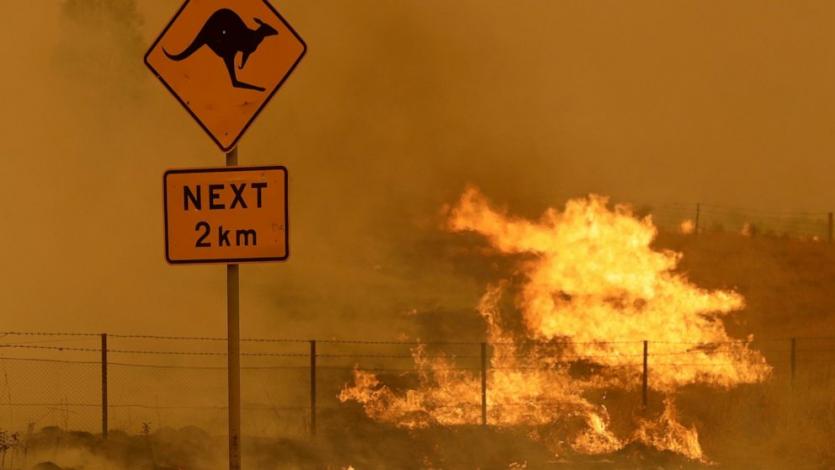Fire burns in the grass near Bumbalong, south of the Australian capital, Canberra, Saturday, Feb. 1, 2020. The threat is posed by a blaze on Canberra's southern fringe that has razed more than 21,500 hectares (53,000 acres) since it was sparked by heat from a military helicopter landing light on Monday, the Emergency Services Agency said. Photo:AP
Further droughts and extended fire season predicted for Australia
By Patryk Krych | The World Daily | NOVEMBER 13th 2020
On Friday, Australia’s weather bureau warned that the climate in the country will continue to see a gradual warming which will subsequently lead to less rainfall in the Southwest and Southeast, as well as a possible extension to the upcoming fire season.
With the expectation of Australia’s climate becoming gradually hotter, it’s been forecast that an increase of both drought and extreme weather conditions may be inevitable. Drought has been considered a particular danger in the regions where rainfall won’t be seen for a long while.
The biggest fears that come along with this report are concerning the state of last year’s bushfires, and how the worsening of weather conditions may affect the wildfires that are already beginning to occur yet again in the Australian bush.
“Australia needs to plan for and adapt to the changing nature of climate risk now and in the decades ahead,” the Bureau of Meteorology (BoM) said in their latest State of Climate report. “Reducing global greenhouse gas emissions will lead to less warming and fewer impacts in the future.”
The report was made jointly with the Commonwealth Scientific and Industrial Research Organisation (CSIRO), an Australian government scientific research agency, and is released this way every two years. It focuses on the fact that carbon emissions are the main culprit of the rise of extreme heat, and will thusly affect every citizen of Australia negatively.
There’s been a reported trend in Australia of days that have been labelled “extremely warm,” with the year of 2019 seeing 43 such reports regarding these types of days. This is much more than triple of any such reports from before the year 2000.
“This long-term warming trend means that most years are now warmer than almost any observed during the 20th century,” the report stated. “When relatively cooler years do occur, it is because natural drivers that typically cool Australia’s climate, such as La Niña, act to partially offset the background warming trend.”
The report went on to add that since 1910, the Australian climate has seen a warming of at least 1.44 Celsius on average. Despite seeming low, even this type of increase is enough to lead to a furthering of droughts and wildfires.
“Climate change is influencing these trends through its impact on temperature, rainfall, and relative humidity, and the resulting change to the fuel moisture content,” said Karl Braganza, a scientist with BoM.






